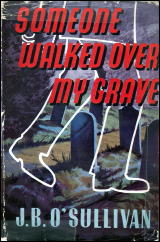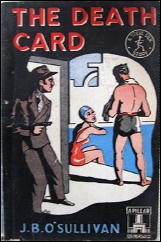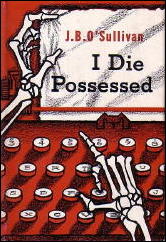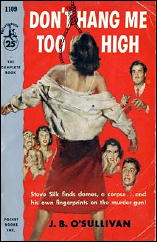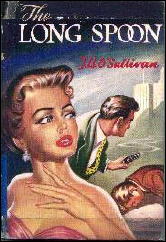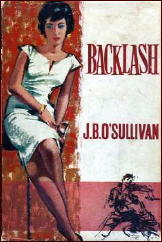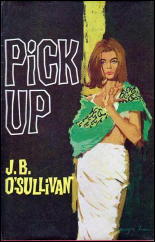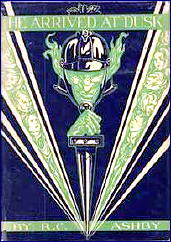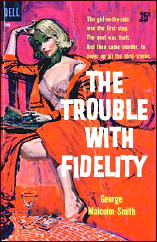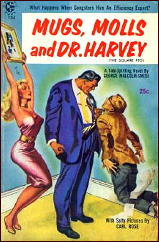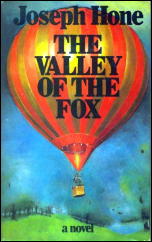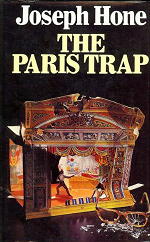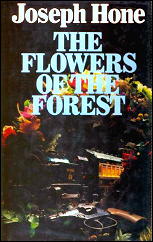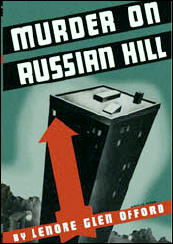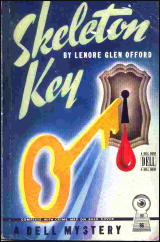A REVIEW BY CURT J. EVANS:
WINIFRED PECK – The Warrielaw Jewel. Faber & Faber, UK, hardcover, 1933. E. P. Dutton, US, hardcover, 1933.
In 1933, Catholic priest and writer Ronald Arbuthnott Knox, one of the talented Knox siblings, children of Edmund Arbuthnott Knox, former Anglican Bishop of Manchester, published Body in the Silo, a detective novel.

This is not really news. Father Knox, best known in the mystery genre today for having formulated an influential set of “rules” for the writing of detective fiction, had before 1933 already published three well-received detective novels and been admitted as an original member of the Detection Club in 1930.
There was a five year lag between The Footsteps at the Lock (1928) and The Body in the Silo (1933), but, still, the appearance of the latter could not exactly be called a surprise.
But another Knox sibling also published a detective novel in 1933: one of Ronald Knox’s sisters, (Lady) Winifred (Knox) Peck. Entitled The Warrielaw Jewel, this mystery tale by Peck, a once successful though today mostly forgotten mainstream novelist, received quite favorable reviews and holds up well today.
Three years ago, the excellent Persephone Books reprinted Peck’s House-Bound, a mainstream novel with a World War Two period setting, with an introduction by her (and Ronald Knox’s) famous niece, the late novelist Penelope Fitzgerald. The Warrielaw Jewel deserves reprinting as well.
Jewel is notable as an early example of a Golden Age mystery that, in its shifting of emphasis from pure puzzle to the study of character and setting, helped mark the gradual shift from detective story to crime novel which Julian Symons famously celebrated in his history of the mystery genre, Bloody Murder .
A tale of Victorian/Edwardian familial dysfunction, Jewel rather resembles Margery Allingham’s Police at the Funeral (1931) and More Work for the Undertaker (1948), as well as S.S. Van Dine’s The Greene Murder Case (1928).
While the puzzle certainly is not as intricate as Van Dine’s in the latter novel, the writing is excellent, in my view on a level with that of Allingham and her Crime Queen contemporaries Dorothy L. Sayers and Ngaio Marsh. (There also is some similarity to American Mary Roberts Rinehart’s mystery novel The Album, published the same year, though thankfully The Warrielaw Jewel is without all Rinehart’s Had-I-But-Known digressions.)
As one pleased reviewer noted of Peck’s mystery novel, “the writing, atmosphere, and characterization” made the story “something quite distinct.”
The Warrielaw Jewel actually is set in the Edwardian era, 1909 specifically ( “that period, so far away from modern youth, when King Edward VII lived, and skirts were long and motors few, and the term Victorian was not yet a reproach”).
The narrator, Betty Morrison, wife of the lawyer for the eccentric, decaying gentry family of Warrielaws, tells the tale from the vantage point of the early 1930s, looking back over those shocking events in the vicinity of Edinburgh, Scotland, including the death of elderly family head Jessica Warrielaw and the trial of her favored nephew for murder.
Involved in the affair is a family heirloom, a so-called fairy-jewel, said to have been given to the Warrielaw family centuries ago by a glittering enchanted lady carried off and married by a dark and brooding laird ancestor. A curse is said to have been laid upon the jewel. Certainly dreadful happenings, whatever the cause, overtake the family in the present day.
There is investigation and detection, performed by an retired policeman friend of Betty Morrison’s husband; yet it is Betty herself who provides the final, crucial piece of evidence. The mystery itself is engrossing, though the best elements of the tale are found in the characters — particularly the various odd Warrielaws and their remaining retainers –and the Edwardian Scottish atmosphere.
I hope that one day Winifred Peck’s The Warrielaw Jewel is republished and honored as a member of the company of better-written, literate mysteries of the period, for it certainly deserves to be so designated.
When one reviewer declared The Warrielaw Jewel “in a class by itself” and added that “it looks as if [Mrs. Peck] were going to bear [Father Knox] at his own special game,” he was not, in my view, exaggerating.
Bio-Bibliographic Data: Winifred Peck, 1882-1962, was born and educated in Oxford and lived in Edinburgh, according to the Revised Crime Fiction IV, by Allen J. Hubin. His bibliography includes only one other mystery novel that she wrote, the provocatively titled Arrest the Bishop? (Faber, 1949).
While copies of the latter may be found offered for sale online (although with asking prices of $50 and up), none of The Warrielaw Jewel were seen, even with a US edition.
